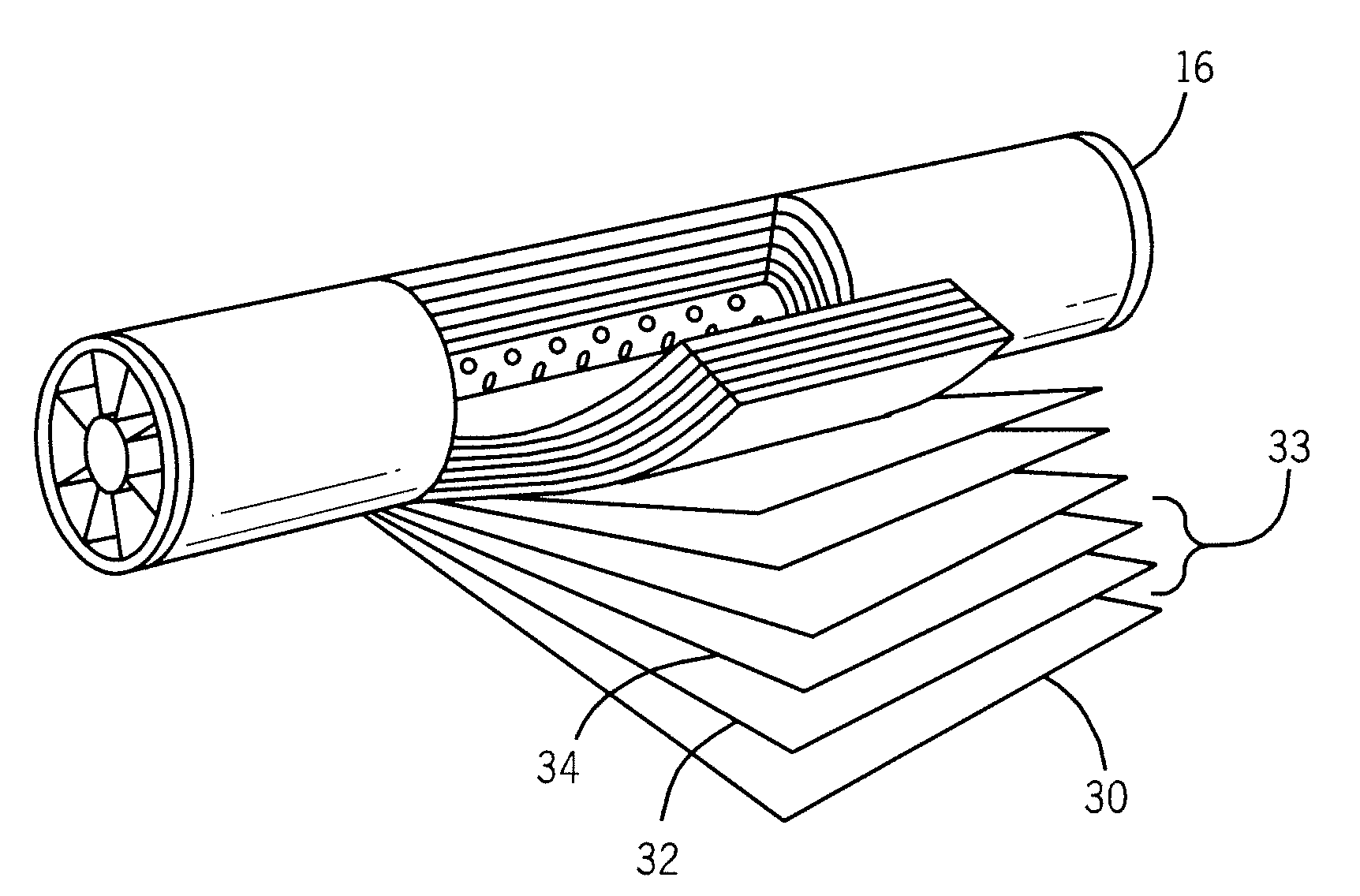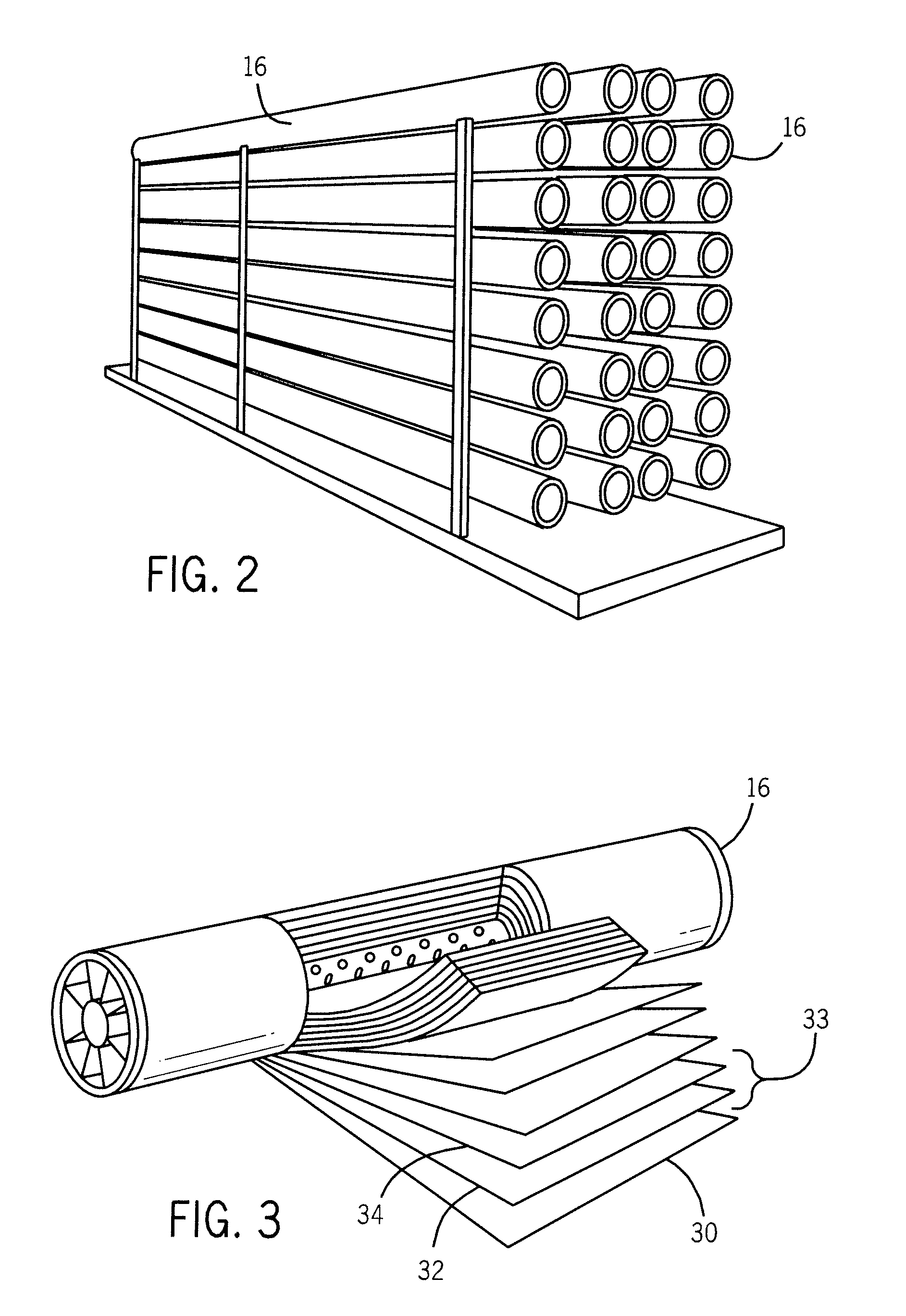Membrane, water treatment system, and associated method
- Summary
- Abstract
- Description
- Claims
- Application Information
AI Technical Summary
Benefits of technology
Problems solved by technology
Method used
Image
Examples
examples 1-4
[0034]With reference to Table 1, Examples 1-4 show membrane performance that may be obtained by incorporating chain-capping reagents and surfactants into the aqueous phase of the first reactant solution 44. Example 1 is a control that has no added chain-capping reagents or surfactants in either phase. In contrast, Example 2 shows that adding a surfactant containing silicon, carbon, and oxygen atoms to the aqueous phase may increase flux, with a smaller corresponding increase in the salt passage. Example 3 shows the addition of an endcapping reagent, bromo-acetic acid (BrAA), to the aqueous phase increases the flux over the control, while reducing the salt passage. The addition of both a surfactant and the BrAA to the aqueous phase may have a synergistic effect, as shown by Example 4. As shown in Example 4, adding both may increase the flux over that of the surfactant by itself, and may decrease salt passage from that of the surfactant by itself.
examples 5-12
[0035]Many of the chain-capping reagents tested have minimal solubility in organic solvents, such as the second reactant solution 52 of these examples. To improve the solubility of these reagents, a cosolvent may be added to the organic phase. Examples 5-12 show the effects on membrane performance of incorporating a cosolvent into the organic phase, without the presence of either an additional endcapping reagent or a surfactant. As shown by the results obtained for Example 8, 1% of anisole added to the ISOPAR G solution may have a minimal effect on the final properties of the membrane. Other cosolvents that may be used, such as ethyl actate (Example 10) and cyclohexanone (Example 12) may have greater effects, indicating that they may participate in the reaction. Accordingly, anisole may be an appropriate cosolvent to compare the performance of different chain-capping reagents, as shown in Examples 13-18, depending on the solubility of the chain-capping reagent.
examples 13-18
[0036]Examples 13-18 compare different chain-capping reagents to determine the effects their use may have on the final performance of the membrane. In most cases, the listed chain-capping reagents were sufficiently soluble in ISOPAR G that no cosolvent was needed. However, in the case of benzene-1,3-di(sulfonyl chloride) and BrAA, shown in Examples 17 and 18, 1% anisole was added to the organic phase to increase the solubility. In comparisons of these compositions, the optimum values for flux may be obtained using BrAA as a chain-capping reagent in the organic phase.
PUM
| Property | Measurement | Unit |
|---|---|---|
| Fraction | aaaaa | aaaaa |
| Fraction | aaaaa | aaaaa |
| Fraction | aaaaa | aaaaa |
Abstract
Description
Claims
Application Information
 Login to View More
Login to View More - R&D
- Intellectual Property
- Life Sciences
- Materials
- Tech Scout
- Unparalleled Data Quality
- Higher Quality Content
- 60% Fewer Hallucinations
Browse by: Latest US Patents, China's latest patents, Technical Efficacy Thesaurus, Application Domain, Technology Topic, Popular Technical Reports.
© 2025 PatSnap. All rights reserved.Legal|Privacy policy|Modern Slavery Act Transparency Statement|Sitemap|About US| Contact US: help@patsnap.com



